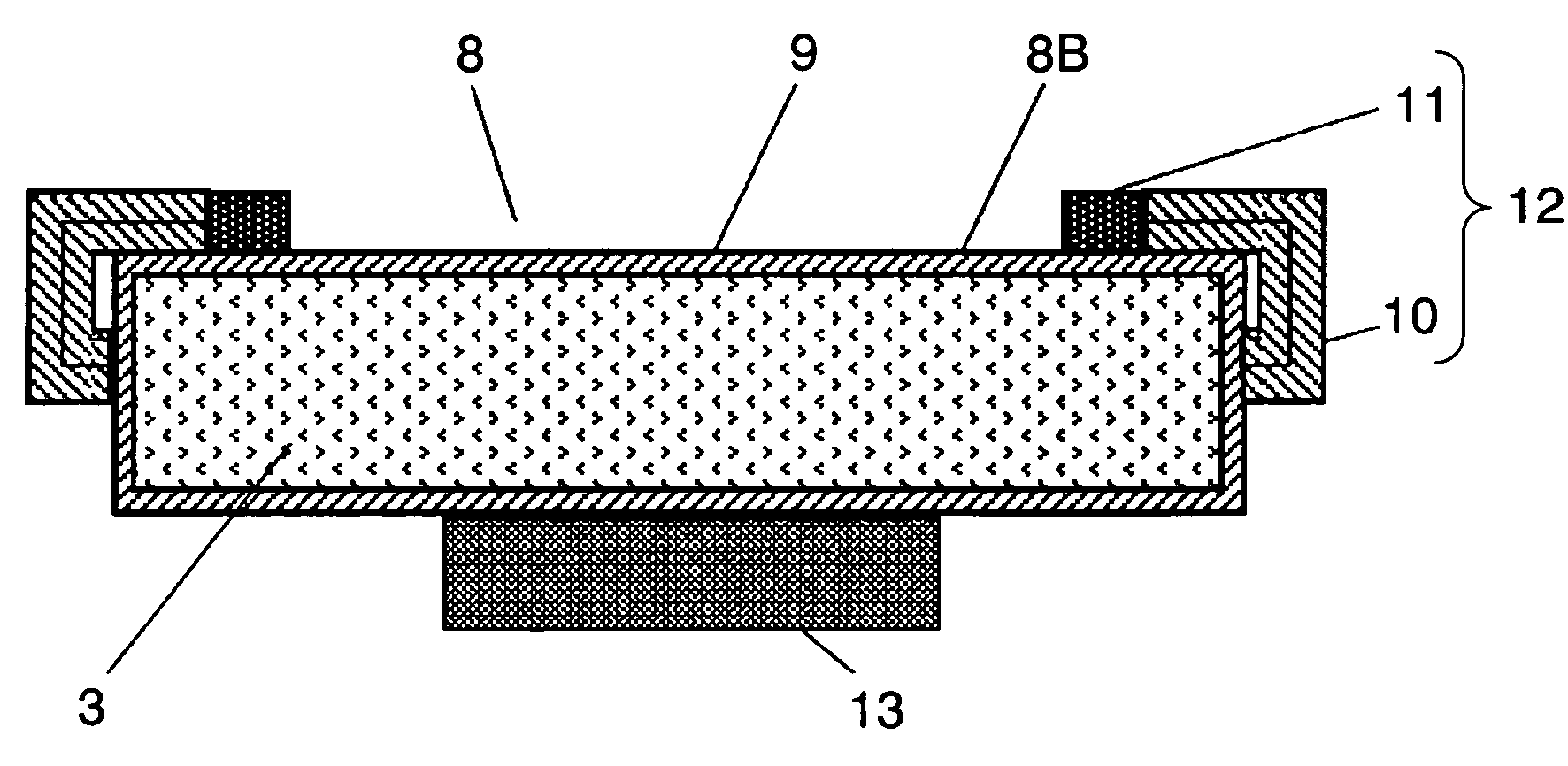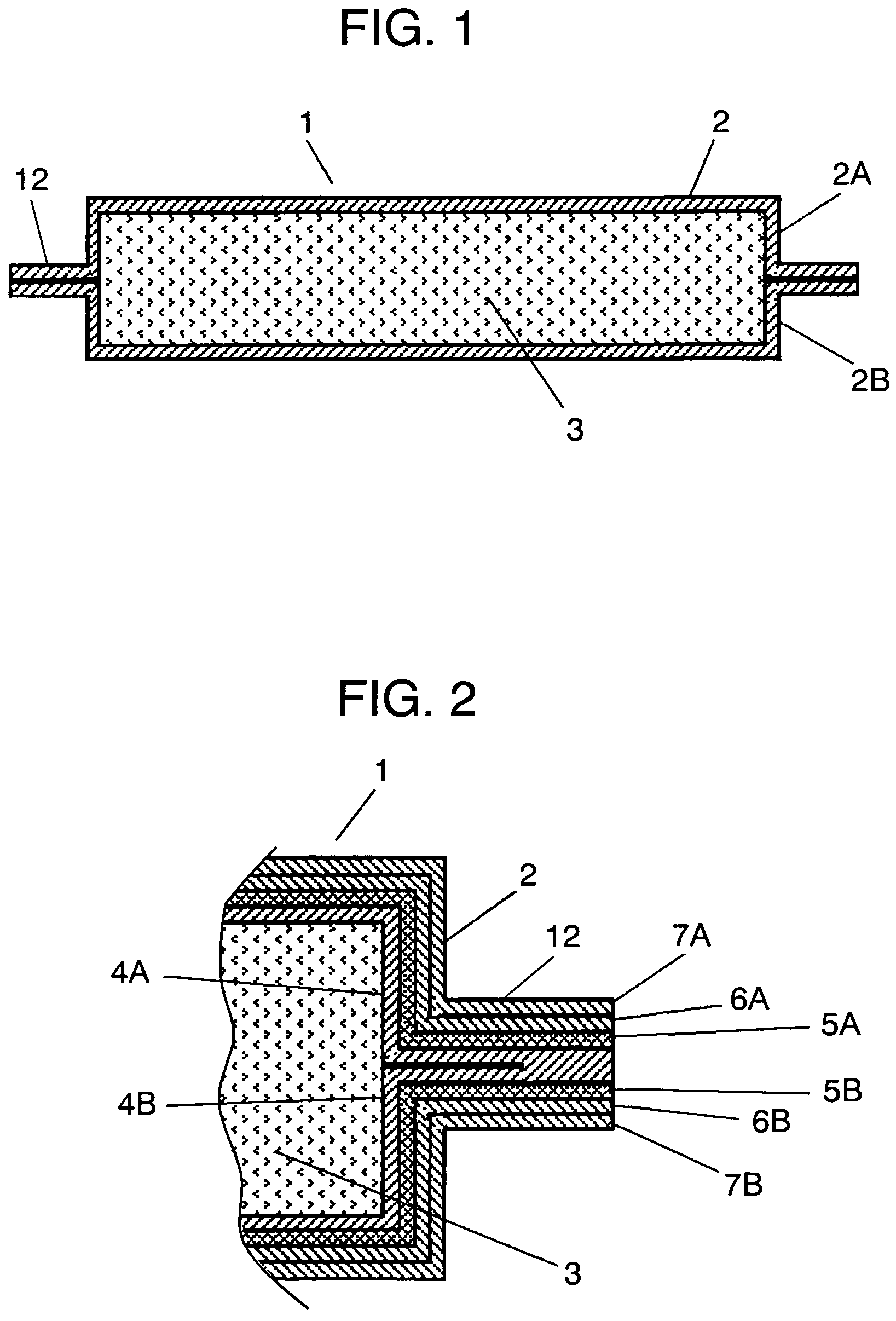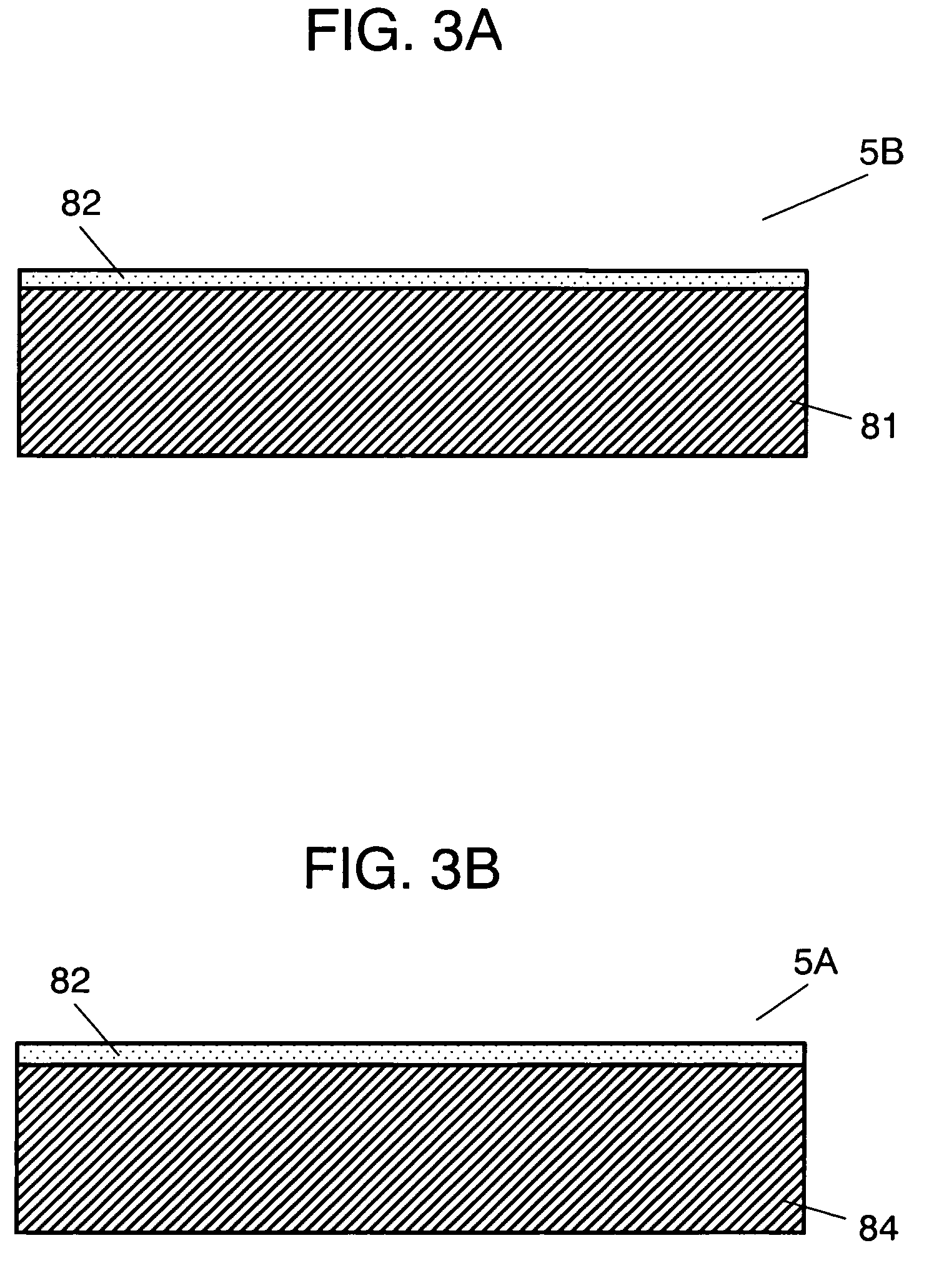Vacuum heat insulator and apparatuses using the same
a heat insulator and vacuum technology, applied in the field apparatuses, can solve the problems of vacuum heat insulators, resin films, vacuum deterioration, etc., and achieve the effect of preventing the degradation of gas barrier properties
- Summary
- Abstract
- Description
- Claims
- Application Information
AI Technical Summary
Benefits of technology
Problems solved by technology
Method used
Image
Examples
Embodiment Construction
[0021]FIG. 1 is a sectional view of a vacuum heat insulator in accordance with an exemplary embodiment of the present invention. FIG. 2 is a sectional view of an essential part showing a fin of the vacuum heat insulator. Enveloping member 2 that is made of two sheets of laminated films (herein after referred to simply as films) 2A and 2B facing to each other covers core material 3. The inside of enveloping member 2 is evacuated and the periphery thereof is heat-sealed to form vacuum heat insulator 1.
[0022]The two kinds of films 2A and 2B are composed of heat seal layers 4A and 4B, gas barrier layers 5A and 5B, first protective layers 6A and 6A, and second protective layers 7A and 7B, respectively.
[0023]Film 2A is used as a heat-insulating surface on a high-temperature side. For heat seal layer 4A, a polychlorotrifluoroethylene (50-μm-thick) having a melting point of 210° C. is used. Having a low melting point among fluorine resin films, polychlorotrifluoroethylene is easy to use and...
PUM
| Property | Measurement | Unit |
|---|---|---|
| temperature | aaaaa | aaaaa |
| temperature | aaaaa | aaaaa |
| melting point | aaaaa | aaaaa |
Abstract
Description
Claims
Application Information
 Login to View More
Login to View More - R&D
- Intellectual Property
- Life Sciences
- Materials
- Tech Scout
- Unparalleled Data Quality
- Higher Quality Content
- 60% Fewer Hallucinations
Browse by: Latest US Patents, China's latest patents, Technical Efficacy Thesaurus, Application Domain, Technology Topic, Popular Technical Reports.
© 2025 PatSnap. All rights reserved.Legal|Privacy policy|Modern Slavery Act Transparency Statement|Sitemap|About US| Contact US: help@patsnap.com



